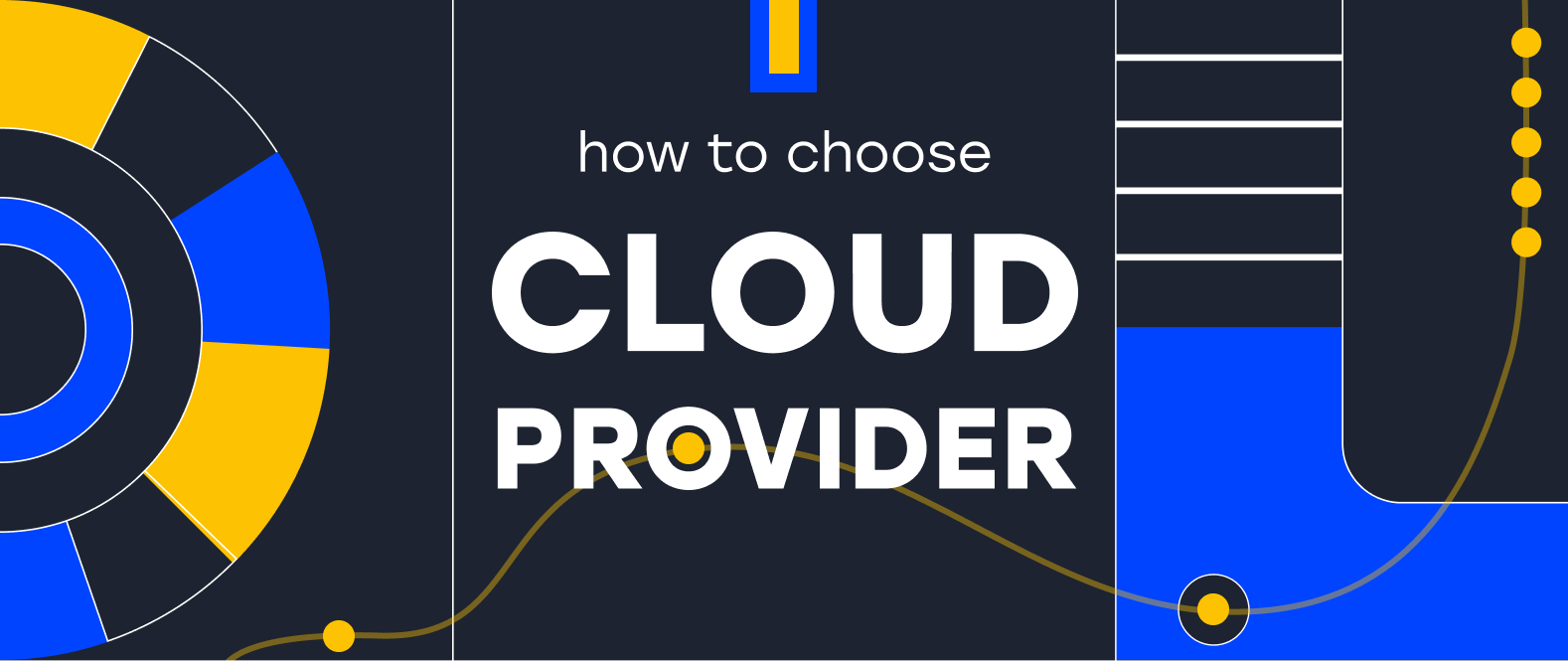Golden Trio of Cloud Computing: Iaas, Paas, SaaS
You've probably heard a lot about cloud services, but you can't imagine why you need them or what they are in general. In fact, cloud technology is overturning our traditional view of business IT infrastructure. There is no need to buy expensive equipment and puzzle over how to optimize the site, where to store large amounts of data, or provide an efficient network in the company. Cloud services can do all of that hard work. In addition, working in the cloud is much more profitable, secure and faster. However, the question arises: which service should you choose?
In this article, we tell you in simple terms what the main types of cloud services are and which one will ensure a brighter future for your business.
If you decide to migrate to the cloud, you will encounter strange letters: IaaS, PaaS, SaaS.
What do they mean?
For an easier understanding, you can visualize it in this way:
- On-premise - buying an empty plot. You do everything yourself - lay electricity, bring water and build a house from scratch on your own. This takes up a lot of your valuable time and effort.
- IaaS - buying an empty plot with connected communications; based on them, make a project of the house and build it
- PaaS - buying a plot of land with a house built. Your area of responsibility is only furniture and interior design.
- SaaS - buying a fully furnished house. Move in and enjoy life!
Let's expand the details.
On-Premise
The On-Premise method involves setting up and controlling software, hardware and infrastructure within an organization's own premises. This method differs starkly from using cloud hosting services, giving businesses complete sovereignty over their IT assets, such as servers, databases and software tools. Companies that choose On-Premise configuration are responsible for maintaining, enhancing and protecting their technology systems, allowing them to customize their IT landscape to meet specific needs and benchmarks.
Compared to a cloud-based hosting provider solution, utilizing an On-Premise strategy typically requires a large upfront investment in hardware and software purchases, as well as ongoing costs for technical staff, power consumption, and the allocation of physical space for equipment.
IaaS
IaaS stands for Infrastructure as a Service in cloud computing. It involves offering computing resources such as virtual servers, storage, and network systems. Imagine it as virtual "machines," on which you can load anything – operating systems, various software, and applications.
The IaaS provider has taken care of the essentials: purchasing and setting up the infrastructure, ensuring power and internet connectivity. Your role is simply to tap into this computational resource over the Internet for your specific needs.
Cloud Infrastructure as a Service (IaaS) includes:
- Virtual servers (VPS/VDS) for installing diverse software;
- Network configurations;
- VPN services, securing data transmitted between the cloud and on-premise data centers;
- User access management, allowing for restrictions on virtual machines or limiting data modification rights;
- Cloud storage facilities for file, data, or backup storage;
- Backup and disaster recovery options.
Opting for IaaS cloud solutions means accessing provider-maintained virtual servers, networks, and cloud storage. You have the power to manage the virtual servers' operating systems, offering you the liberty to tailor and deploy applications as your needs dictate. This approach provides a balance of provider support and personal customization.
Primary advantages:
- Real-time resource adjustment – scale up or down as required;
- Reduced overhead – eliminate the need for expensive servers and maintenance staff;
- Cost-efficient – transform capital expenses into operational ones;
- Immediate operation – avoid delays in equipment setup and maintenance;
- Global accessibility – manage operations from anywhere, not confined to a single location.
Who could find IaaS useful:
- Startups in search of flexible and affordable IT;
- Companies with variable demand, such as e-commerce sites during peak sales periods;
- Technology firms in need of testing new applications;
- Large corporations looking to reduce the cost of maintaining physical servers;
- Companies looking to focus on core business operations rather than IT management.
IaaS is suitable for absolutely every company - from a startup to an international corporation. It is possible to rent capacity for practically any configuration.
One example of an IaaS service is the solutions of the international cloud service provider Serverspace. It offers a variety of hosting options, including VPS cloud servers and dedicated servers, catering to diverse business needs and ensuring optimal performance and reliability. Serverspace allows customers not only to choose the necessary IT resources for rent, but also to customize the required configuration. You can try, for one, the service of creating a private or private cloud, and opt for the suitable server capacity. The cost of the cloud server will not be fixed; it will depend solely on the parameters you select. That is why you will not overpay for the service. Serverspace provides High Quality hardware and data centers all over the world. Thus, the business does not need to worry about its IT infrastructure; Serverspace specialists are engaged in its support around the clock.
PaaS
PaaS - Platform as a Service in cloud computing. The cloud platform concept implies a partially ready-made tool for running or managing applications.
The PaaS provider offers a solution consisting of virtual infrastructure (processor capacity, RAM, storage) and special software that is installed on a virtual server. PaaS services are typically used by developers and companies that want to delegate part of their processes to a service provider to focus on higher-priority business tasks. The approach saves time and allows for more frequent releases.
PaaS solutions enable users to do the work of creating, integrating, migrating and deploying various applications.
PaaS products:
Kubernetes - an open-source platform for automating the deployment, scaling, and operation of application containers across host clusters. As a PaaS service, Kubernetes abstracts away the complexity of infrastructure management, streamlines development processes, and allows you to focus on building applications rather than managing servers. Providers such as Serverspace offer Kubernetes services, giving users the ability to deploy and operate containerized applications easily and efficiently.
Docker - a platform that allows users to develop, ship, and run applications inside containers. Serverspace also provides a Docker service that you can use to deploy and scale applications more easily and quickly.
Key Benefits:
- Saving time for system customization;
- Using the optimal off-the-shelf solution;
- Reducing the time "from idea to realization" - the speed of testing and application development increases;
- Multi-user access to the system from different locations.
Who is PaaS perfect for?
- Software developers who need an off-the-shelf platform;
- Startups creating new applications without heavy technology infrastructure;
- Companies specializing in application development;
- Companies that require rapid deployment and updating of applications;
- Teams that want to collaborate on software development projects.
SaaS
SaaS - Software as a Service in cloud computing. It is a completely ready-made solution that can be used immediately.
When implementing, the SaaS service provider assumes all obligations to configure services. The client does not participate in these processes, but only uses the finished product with existing settings. The service provider performs licensing, upgrades, technical support and other settings.
Examples of SaaS professional services:
- Dropbox;
- Zoom;
- Skype;
- SAP Concur;
- GoToMeeting.
Main advantages of SaaS technology:
- Cost-effective - reduces initial expenses.
- Quick to start - no installation needed;
- Auto-updates - no manual updates needed;.
- User-friendly - easy to use on any device;
- Collaborative - simplifies team work;
- Low IT demand - minimizes IT workload.
Who will benefit from SaaS products:
- Companies in need of affordable and easy-to-use software;
- Small businesses looking for inexpensive tools;
- E-commerce sites to manage online sales;
- Marketing companies in search of project management platforms;
- Educational institutions need e-learning platforms.
These SaaS solutions are suitable for companies that need to quickly solve a specific task, and they are satisfied with the solutions offered by the provider. If a client needs individual customization of any parameters, it is reasonable to choose between Iaas or PaaS services.
If SaaS software completely covers your needs, it is quicker and less expensive to use an off-the-shelf service rather than develop your own. For example, almost all companies use ready-made email clients, because the functionality of this service is sufficient for all tasks.
How to understand what's best for you?
To figure out the right cloud service - be it IaaS, PaaS, or SaaS - for your project, assess your project goals and your team's tech skills.
- Use IaaS for access to computing resources, such as VPS, with the added benefit of controlling the operating system and software. This is great for tech-savvy teams needing customization.
- PaaS is tailored for developers who want to build and deploy applications without the hassle of managing the base infrastructure.
- SaaS offers a user-friendly approach with internet-based applications ready for immediate use, ideal for those wanting hassle-free software solutions.
Cloud services can really make your life easier and take your business to the next level. No matter what your specific needs are, there is a perfect cloud solution for you. Don't miss the flight to the sky - migrate to the cloud.





